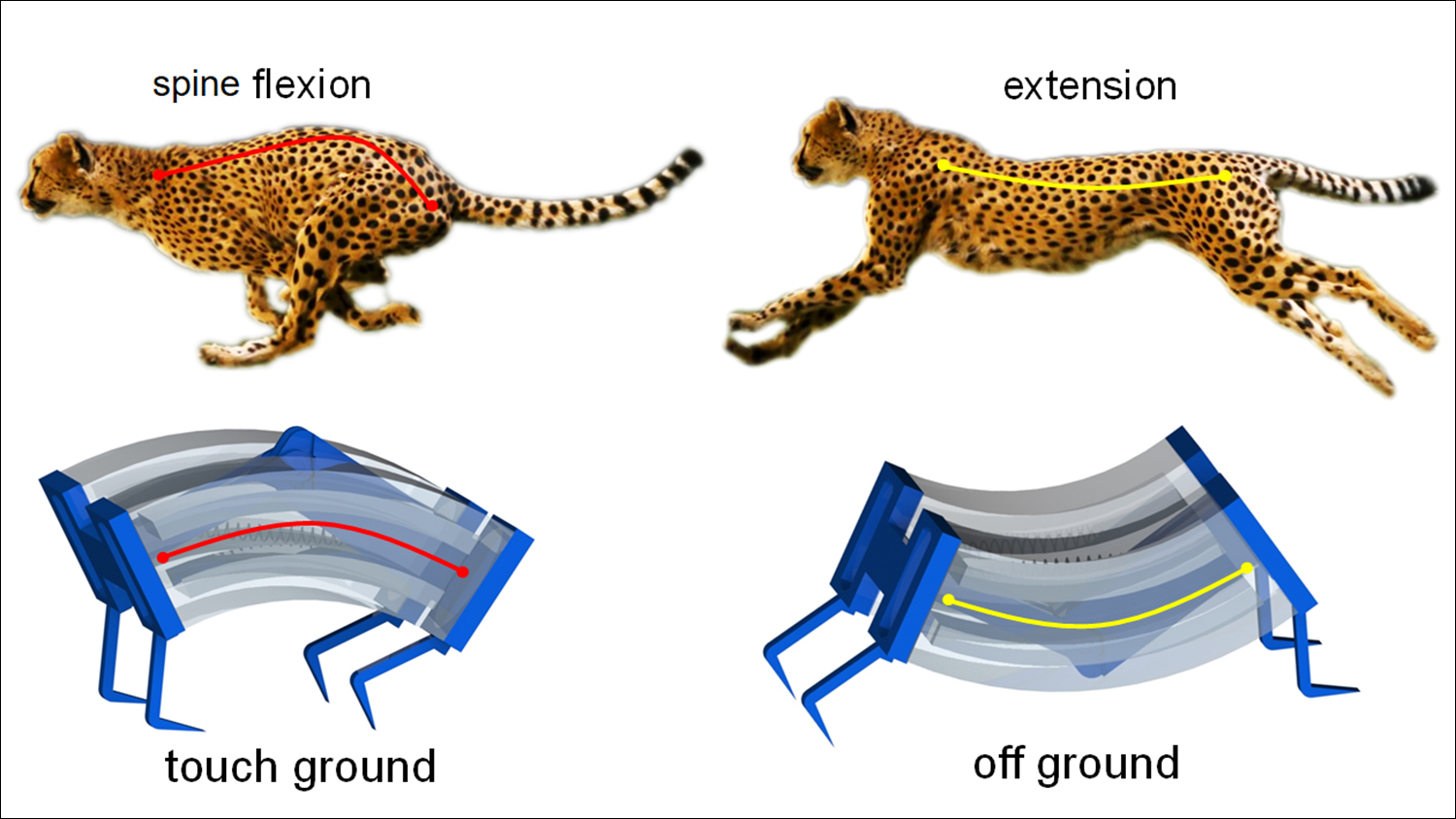Researchers Build Fastest Soft Robots Yet
11. 5. 2020 | North Carolina State University | www.ncsu.edu
Inspired by the biomechanics of cheetahs, researchers have developed a new type of soft robot that is capable of moving more quickly on solid surfaces or in the water than previous generations of soft robots. The new soft robotics are also capable of grabbing objects delicately – or with sufficient strength to lift heavy objects.
“We were inspired by the cheetah to create a type of soft robot that has a spring-powered, ‘bistable’ spine, meaning that the robot has two stable states,” said Jie Yin, an assistant professor of mechanical and aerospace engineering at North Carolina State University and corresponding author of a paper on the new soft robots. “We can switch between these stable states rapidly by pumping air into channels that line the soft, silicone robot. Switching between the two states releases a significant amount of energy, allowing the robot to quickly exert force against the ground. This enables the robot to gallop across the surface, meaning that its feet leave the ground."

The fastest soft robots until now could move at speeds of up to 0.8 body lengths per second on flat, solid surfaces. The new class of soft robots, which are called “Leveraging Elastic instabilities for Amplified Performance” (LEAP), are able to reach speeds of up to 2.7 body lengths per second – more than three times faster – at a low actuation frequency of about 3Hz. These new robots are also capable of running up steep inclines, which can be challenging or impossible for soft robots that exert less force against the ground.
Read more at North Carolina State University
Image Credit: North Carolina State University
-jk-




